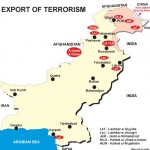IDR Blog
The Threat of Bio-Terrorism
Epilogue
Terrorism is by no means a form of warfare unique to the present era; it is as old as the human race. What distinguishes the present era from previous periods in history is the coincidence between vastly greater means available to terrorists and the increasing number of targets.[1] The targets are no longer military or political targets; they could be economic hub centres or innocent civilian population. The terrorists have used various methods in the past to attack such targets. In order to deceive the state authorities non-state actors are adopting various unconventional tactics of terrorism and bio-terrorism could be one of them.
Bio-terrorism has had little success in the recent past. But post 9/11 the threat of bio-terrorism is becoming more real. The pace of scientific advancements in the field of biotechnology is likely to intensify this threat. Post 9/11 there exists a need to clearly understand what this threat is all about and how futuristic weapons will work. The existing defences against biological weapons (for identification and treatment) are inadequate. The general population is unaware about the exact nature of the threat and when biological terror strikes, ignorance may heighten the disaster.
On the other hand there exists a possibility that constantly discussing this subject in open for a may cause needless alarm, as also give new ideas to the non-state actors about the hidden potential of these weapons. But the current risks are too substantial to keep silent about this threat.
The problem needs to be handled at various fronts simultaneously. When the threat is so real it becomes difficult to prioritise the options available to tackle the threat. On one hand there is a need to strengthen the BWC while on the other hand “there is a need to prepare adequate vaccine production facilities and medical supplies.
The existing pattern of actual bio-terror attacks does not provide a clear basis for predicting the nature of futuristic probable attacks. It is difficult to forecast the possible means of attack, the target, and the type of bio-weapon. As a result, there would be always a debate going on regarding the seriousness of the threat till it becomes a reality. The problem is how to do a risk benefit ratio analysis when you only know that the risk of attack is not zero. Under such circumstances, it becomes important to carry out a fresh analysis of this emerging threat. Also, there exists a need to look beyond empirical inputs.
In future, non-state actors may engage stronger adversaries by trying to avoid their strengths and exploiting their weaknesses. For this, they may use biological weapons, which could be the most suitable weapons for such purposes. The states would have to respond to these threats probably by changing the conventional techniques of fighting terrorism.
A non-state actor can always choose the time and place of the attack. A biological weapon is a unique type of weapon where the terrorist outfits will always be in a “win-win” situation. Firstly, it will be extremely difficult for the state authorities to distinguish between a natural outbreak and the intentional handiwork of the terrorist groups. Secondly, even if terrorist groups fail in their attempt nobody will notice it and the groups will still be left with an opportunity to make a fresh attempt.
In the event of a biological attack, three things are needed to combat the infection: epidemiological knowledge, a massive vaccination programme, and antibiotics. Depending upon the size of the infected population, it may be possible to assemble enough doctors and antibiotics to treat the victims and to check the spread of the disease, but an adequate vaccination programme is another matter altogether. Even if enough vaccine is available, which is unlikely in the event the terrorists employ an exotic virus, it generally takes two to four weeks to develop full immunity, which is likely to be too long to save many of those exposed to the virus.[2]
There is an interesting dimension to this threat. People are fixated on bio-terrorism. There has been a lot going on through the past centuries and decades that is really bio-terrorism, and that is Nature… The worst bio-terrorist might actually be Nature herself, if we look at the constant assault of emerging and reemerging diseases that we have had to deal with.
One must look upon the emerging and reemerging diseases as a restless tide: a tide of microbes that continually, back and forth, assaults our human species. We are not going to succumb to them, and we are not going to get rid of them, but they will always be with us.
Unfortunately, we now have a different kind of emerging and reemerging disease – bio-terrorism – but we need to think of it in the context of the broad emergence of microbes and their interaction with mankind. So, the amount of resources and effort and focus that we are devoting to biological terrorism – and the defence against biological terrorism – might ultimately, if looked upon in the context of all emerging and reemerging diseases, be an important and positive boon for public health now and in the future.[3]
Finally, the modelling techniques and case study techniques used in this book are by no means exhaustive. There is a need to adopt various approaches and ideas to carry out more realistic threat assessment. The assessment of this book is that, the threat of bio-terrorism is not overwhelmingly definitive but is strongly suggestive.
———————
[1] Uvingstone NC et al, “CBW: The Poor Man’s Atomic Bomb”, National Security Paper, Feb 1984, Institute for Foreign Policy Analysis, Cambridge.
[2] Ibid, p. 30.
[3] Fauci Anthony S, “Bio-terrorism: A Clear & Present Danger”, The Haskin Lectureship in Science Policy, Nov 15, 2002, Rand, Santa Monica, 2003.





